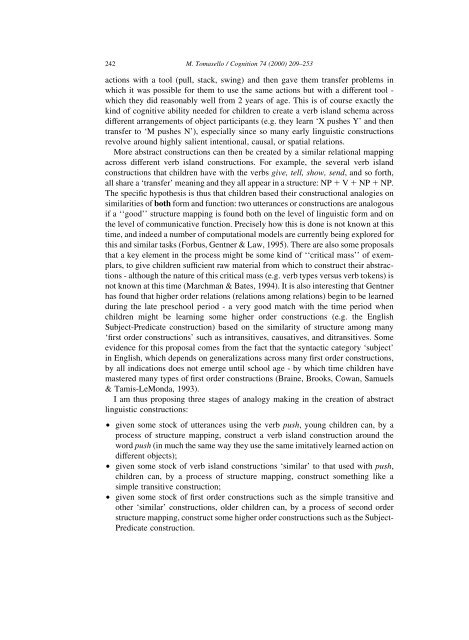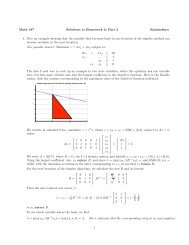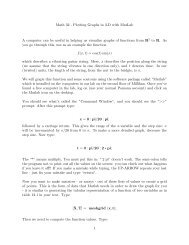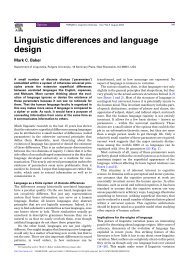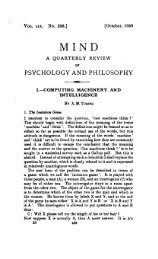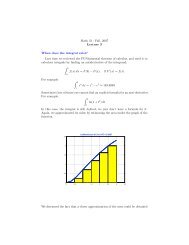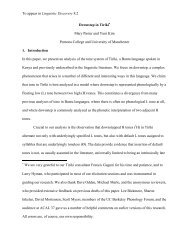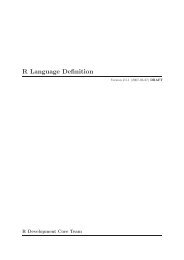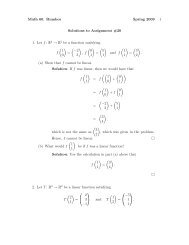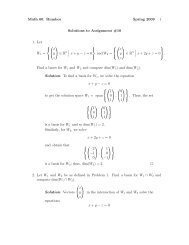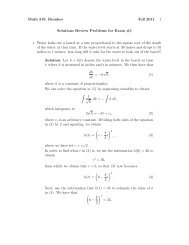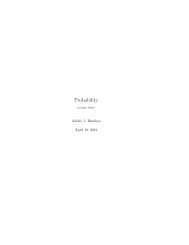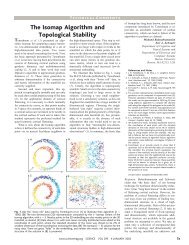Tomasello
Tomasello
Tomasello
Create successful ePaper yourself
Turn your PDF publications into a flip-book with our unique Google optimized e-Paper software.
242M. <strong>Tomasello</strong> / Cognition 74 (2000) 209±253actions with a tool (pull, stack, swing) and then gave them transfer problems inwhich it was possible for them to use the same actions but with a different tool -which they did reasonably well from 2 years of age. This is of course exactly thekind of cognitive ability needed for children to create a verb island schema acrossdifferent arrangements of object participants (e.g. they learn `X pushes Y' and thentransfer to `M pushes N'), especially since so many early linguistic constructionsrevolve around highly salient intentional, causal, or spatial relations.More abstract constructions can then be created by a similar relational mappingacross different verb island constructions. For example, the several verb islandconstructions that children have with the verbs give, tell, show, send, and so forth,all share a `transfer' meaning and they all appear in a structure: NP 1 V 1 NP 1 NP.The speci®c hypothesis is thus that children based their constructional analogies onsimilarities of both form and function: two utterances or constructions are analogousif a ``good'' structure mapping is found both on the level of linguistic form and onthe level of communicative function. Precisely how this is done is not known at thistime, and indeed a number of computational models are currently being explored forthis and similar tasks (Forbus, Gentner & Law, 1995). There are also some proposalsthat a key element in the process might be some kind of ``critical mass'' of exemplars,to give children suf®cient raw material from which to construct their abstractions- although the nature of this critical mass (e.g. verb types versus verb tokens) isnot known at this time (Marchman & Bates, 1994). It is also interesting that Gentnerhas found that higher order relations (relations among relations) begin to be learnedduring the late preschool period - a very good match with the time period whenchildren might be learning some higher order constructions (e.g. the EnglishSubject-Predicate construction) based on the similarity of structure among many`®rst order constructions' such as intransitives, causatives, and ditransitives. Someevidence for this proposal comes from the fact that the syntactic category `subject'in English, which depends on generalizations across many ®rst order constructions,by all indications does not emerge until school age - by which time children havemastered many types of ®rst order constructions (Braine, Brooks, Cowan, Samuels& Tamis-LeMonda, 1993).I am thus proposing three stages of analogy making in the creation of abstractlinguistic constructions:² given some stock of utterances using the verb push, young children can, by aprocess of structure mapping, construct a verb island construction around theword push (in much the same way they use the same imitatively learned action ondifferent objects);² given some stock of verb island constructions `similar' to that used with push,children can, by a process of structure mapping, construct something like asimple transitive construction;² given some stock of ®rst order constructions such as the simple transitive andother `similar' constructions, older children can, by a process of second orderstructure mapping, construct some higher order constructions such as the Subject-Predicate construction.


